Simulation on Heat Transfer and Emergency Protection of Tanks in a Tank Farm under Fire Scenario
Abstract
:1. Introduction
2. The Description of the Fire Accident
3. Establishment of the Model
3.1. Governing Equation
3.2. Calculation Domain and Geometric Model
3.3. Solution Method
3.3.1. Condition Assumption
3.3.2. Boundary Conditions
3.3.3. Determination of the Simulation Results
4. Results and Discussion
4.1. Simulation Results of the Fire Accident That Occurred in the Tank Farm
4.2. Effect of Wind Speed on Heat Transfer of the Tank Farm
4.3. Effect of Wind Direction on Heat Transfer of the Tank Farm
4.4. Effect of Water Curtain Protection on the Tank Farm
4.5. Effect of Emergency Thermal Insulation Coating on the Tank Farm
5. Conclusions
- (1)
- The highest simulated temperature 1432 K occurred in tanks 6#–14#, downwind of the accident tank. The remaining tanks were rarely affected by the flames and were mainly heated up by thermal radiation;
- (2)
- When the wind speed increases, the affected area of the tank farm decreases compared with the low wind speed. However, the highest temperature of the tanks increased significantly, especially tanks 6#–14#, and the highest temperature that could be reached was 1556 K;
- (3)
- Among the selected wind directions (east wind, 71° east by north, 19° east by north wind, 45° east by north wind and north wind), 45° east by north wind has the greatest influence on the tank farm, and its influence scope covers almost the whole tank farm;
- (4)
- Compared with the cooling water intensity of 2 L/min·m2, when the cooling water intensity increases to 6 L/min·m2, the temperature of the tank farm is significantly decreased. The highest temperature of the tank is 779 K, which is 653 K lower than the result without water curtain protection;
- (5)
- PPMHI-L emergency thermal insulation coating has a great thermal insulation effect. The simulated highest temperature of the tanks decreases to 671 K when the emergency thermal insulation coating PPMHI-L is sprayed on the surface of the tanks, which can effectively protect the adjacent tanks.
Author Contributions
Funding
Institutional Review Board Statement
Informed Consent Statement
Data Availability Statement
Conflicts of Interest
References
- Huerta, F.; Vesovic, V. CFD modelling of the isobaric evaporation of cryogenic liquids in storage tanks. Int. J. Heat Mass Tran. 2021, 176, 121419. [Google Scholar] [CrossRef]
- Liu, X.; Li, J.; Li, X. Study of dynamic risk management system for flammable and explosive dangerous chemicals storage area. J. Loss Prev. Process. Ind. 2017, 49, 983–988. [Google Scholar] [CrossRef]
- Tauseef, S.M.; Rashtchian, D.; Abbasi, S.A. CFD-based simulation of dense gas dispersion in presence of obstacles. J. Loss Prev. Process. Ind. 2011, 24, 371–376. [Google Scholar] [CrossRef]
- Iannaccone, T.; Scarponi, G.E.; Landucci, G.; Cozzani, V. Numerical simulation of LNG tanks exposed to fire. Process. Saf. Environ. Prot. 2021, 149, 735–749. [Google Scholar] [CrossRef]
- Rudniak, L.; Milewska, A.; Molga, E. CFD Simulations for Safety of Chemical Reactors and Storage Tanks. Chem. Eng. Technol. 2011, 34, 1781–1789. [Google Scholar] [CrossRef]
- Scarponi, G.E.; Pastor, E.; Planas, E.; Cozzani, V. Analysis of the impact of wildland-urban-interface fires on LPG domestic tanks. Saf. Sci. 2020, 124, 104588. [Google Scholar] [CrossRef]
- Scarponi, G.E.; Landucci, G.; Birk, A.M.; Cozzani, V. Three dimensional CFD simulation of LPG tanks exposed to partially engulfing pool fires. Process. Saf. Environ. Prot. 2021, 150, 385–399. [Google Scholar] [CrossRef]
- Yet-Pole, I.; Cheng, T.-L. Application of CFD model in an LPG tank explosion accident. J. Loss Prev. Process. Ind. 2021, 69, 104367. [Google Scholar] [CrossRef]
- Xing, Z.X.; Jiang, J.C. The model of response of liquefied petroleum gas tanks partially exposed to jet fire. Chin. J. Chem. Eng. 2004, 12, 639–646. [Google Scholar]
- Li, Y.; Jiang, J.; Yu, Y.; Wang, Z.; Xing, Z.; Zhang, Q. Thermal buckling of oil-filled fixed-roof tanks subjected to heat radiation by a burning tank. Eng. Fail. Anal. 2022, 138, 106393. [Google Scholar] [CrossRef]
- Ramsden, N.; Abusaieda, K.A.M. A study of water cooling using different water application techniques to protect storage tank walls against thermal radiation. Process. Saf. Environ. Prot. 2017, 109, 577–598. [Google Scholar] [CrossRef]
- Ghasemi, A.M.; Nourai, F. A framework for minimizing domino effect through optimum spacing of storage tanks to serve in land use planning risk assessments. Saf. Sci. 2017, 97, 20–26. [Google Scholar] [CrossRef]
- Yu, H.-Z.; Liu, X. An Efficacy Evaluation of Water Mist Protection Against Solid Combustible Fires in Open Environment. Fire Technol. 2019, 55, 343–361. [Google Scholar] [CrossRef]
- Zhang, F.; Cheng, Y.X.; Cheng, J.J.; Wang, A.Q.; Xie, W.; Qu, W.L.; Cheng, Y.F.; Gao, Z.R. PPH (potassium polyacrylate & hectorite) composite materials—A new fire accident emergency method for thermal protection of adjacent tanks. J. Loss Prev. Process. Ind. 2021, 71, 104471. [Google Scholar] [CrossRef]
- Xie, W.L.; Zhang, F.; Li, S.; Xing, L.; Zhu, Y.L.; Cheng, J.J.; Cheng, Y.F.; Gao, Z.R. A new intumescent insulation emergency material for thermal protection of storage tanks –potassium polyacrylate & organic modified hectorite & intumescent flame retardant. J. Loss Prev. Process. Ind. 2022, 76, 104735. [Google Scholar] [CrossRef]
- Weiss, J.; Ortega-Fernández, I.; Müller, R.; Bielsa, D.; Fluri, T. Improved thermocline initialization through optimized inlet design for single-tank thermal energy storage systems. J. Energy Storage 2021, 42, 103088. [Google Scholar] [CrossRef]
- Liu, Q.; Chen, Z.L.; Liu, H.T.; Yin, W.Q.; Yang, Y. CFD simulation of fire dike overtopping from catastrophic ruptured tank at oil depot. J. Loss Prev. Process. Ind. 2017, 49, 427–436. [Google Scholar] [CrossRef]
- Lin, Z.R.; Wang, S.F.; Fu, S.X.; Huo, J.P. Numerical study on effects of the cofferdam area in liquefied natural gas storage tank on the leakage and diffusion characteristics of natural gas. Chin. J. Chem. Eng. 2020, 29, 228–241. [Google Scholar] [CrossRef]
- Pontiggia, M.; Landucci, G.; Busini, V.; Derudi, M.; Alba, M.; Scaioni, M.; Bonvicini, S.; Cozzani, V.; Rota, R. CFD model simulation of LPG dispersion in urban areas. Atmos. Environ. 2011, 45, 3913–3923. [Google Scholar] [CrossRef]
- Li, J.; Wang, M.; Fang, D.; Wang, J.; Liu, D.; Tian, W.X.; Qiu, S.Z.; Su, G.H. CFD simulation on the transient process of coolant mixing phenomenon in reactor pressure vessel. Ann. Nucl. Energy 2020, 153, 108045. [Google Scholar] [CrossRef]
- Li, M.H.; Shu, Z.Z.; Geng, S.W. Experimental and modelling study on flame tilt angle of flame spread over jet fuel under longitudinally forced air flows. Fuel 2020, 270, 117516. [Google Scholar] [CrossRef]
- Roberts, T.A. Effectiveness of an enhanced deluge system to protect LPG tanks and sensitivity to blocked nozzles and delayed deluge initiation. J. Loss Prev. Process. Ind. 2004, 17, 151–158. [Google Scholar] [CrossRef]
- GB 50183-2004; Code for Fire Prevention in Design of Petroleum and Natural Gas Engineering. China Planning Press: Beijing, China, 2004.
- Standard for Water Spray Fixed Systems for Fire Protection, American National Institute NFPA 15–2022; National Fire Protection Association: Quincy, MA, USA, 2022.

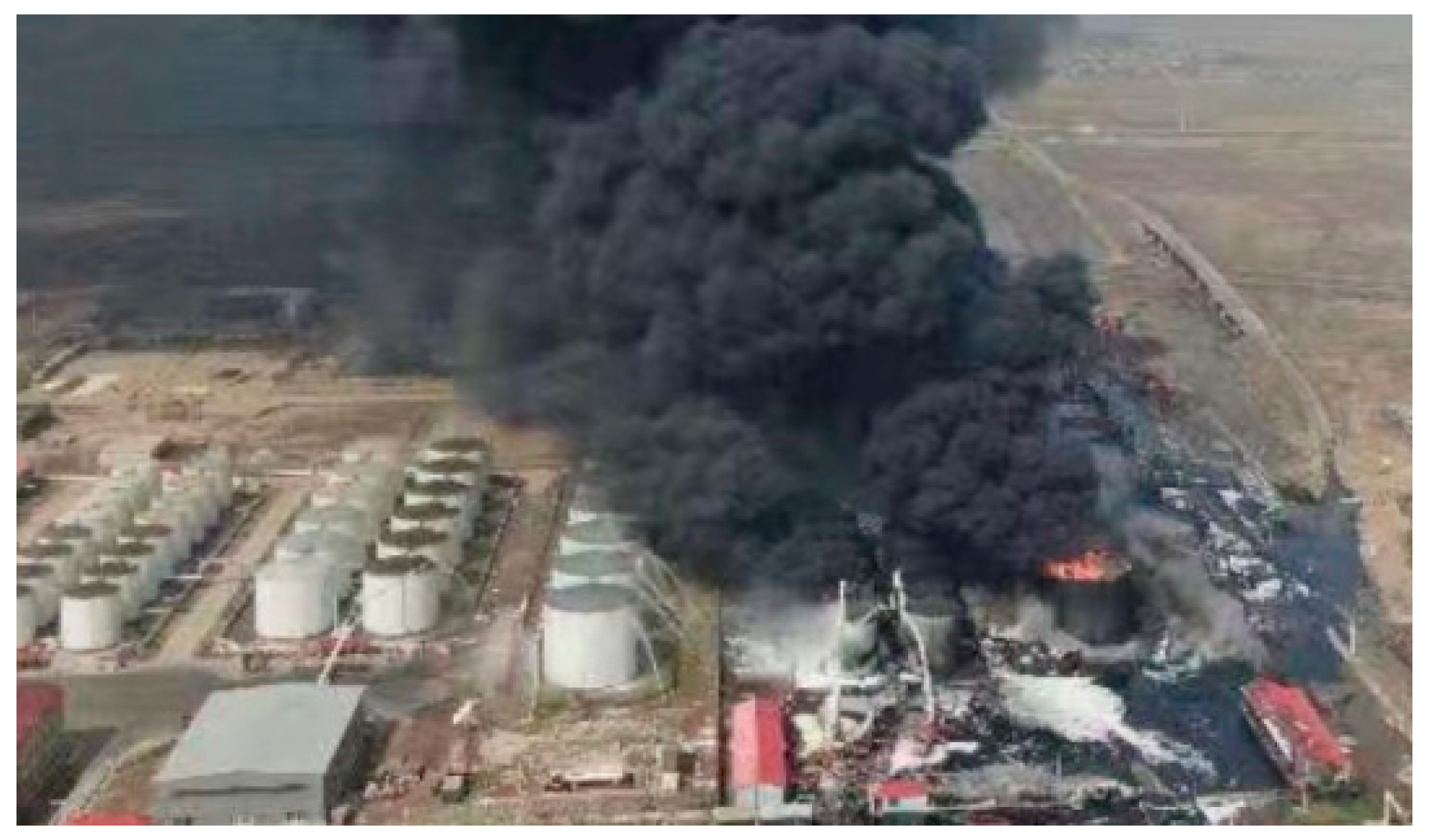
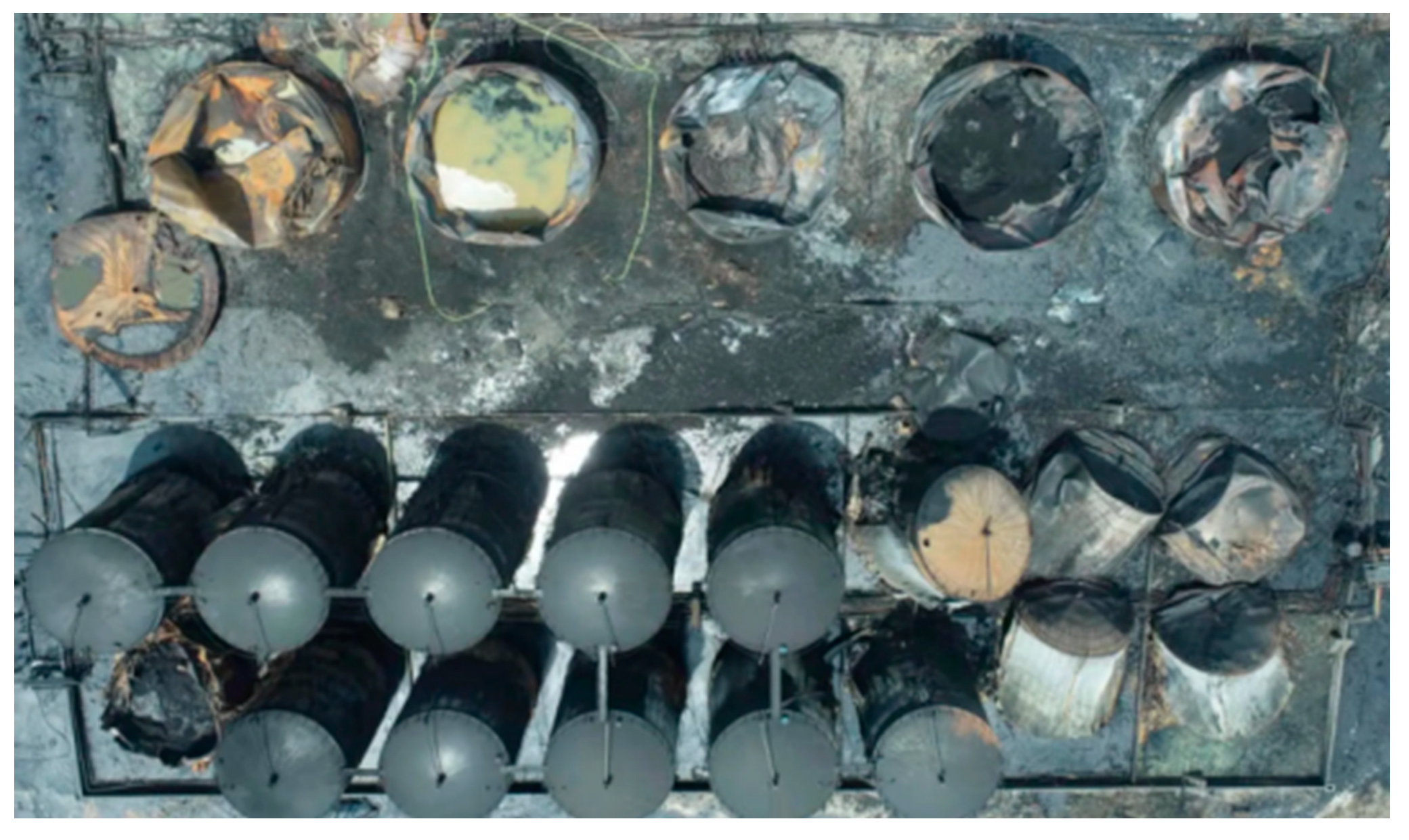


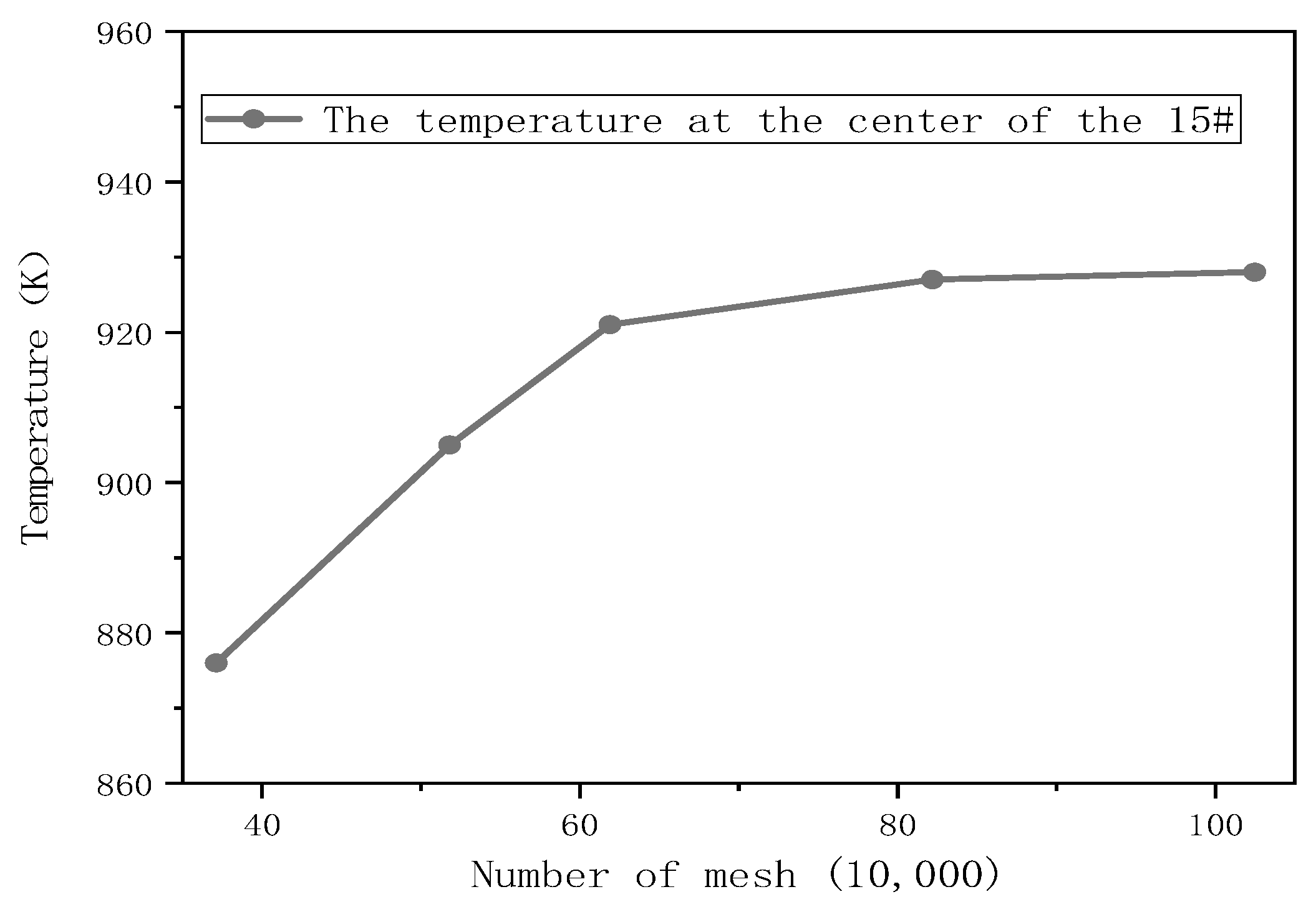


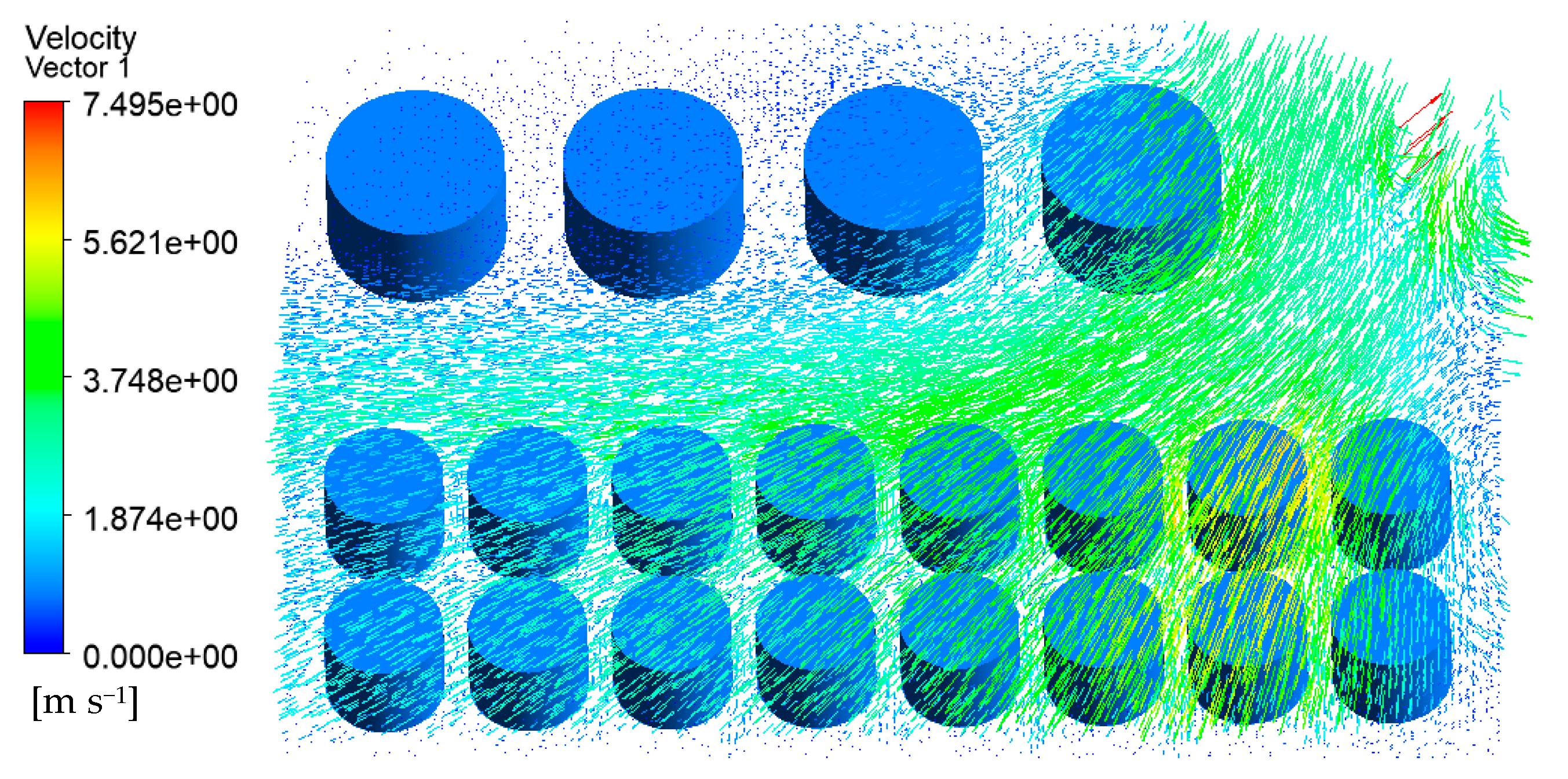
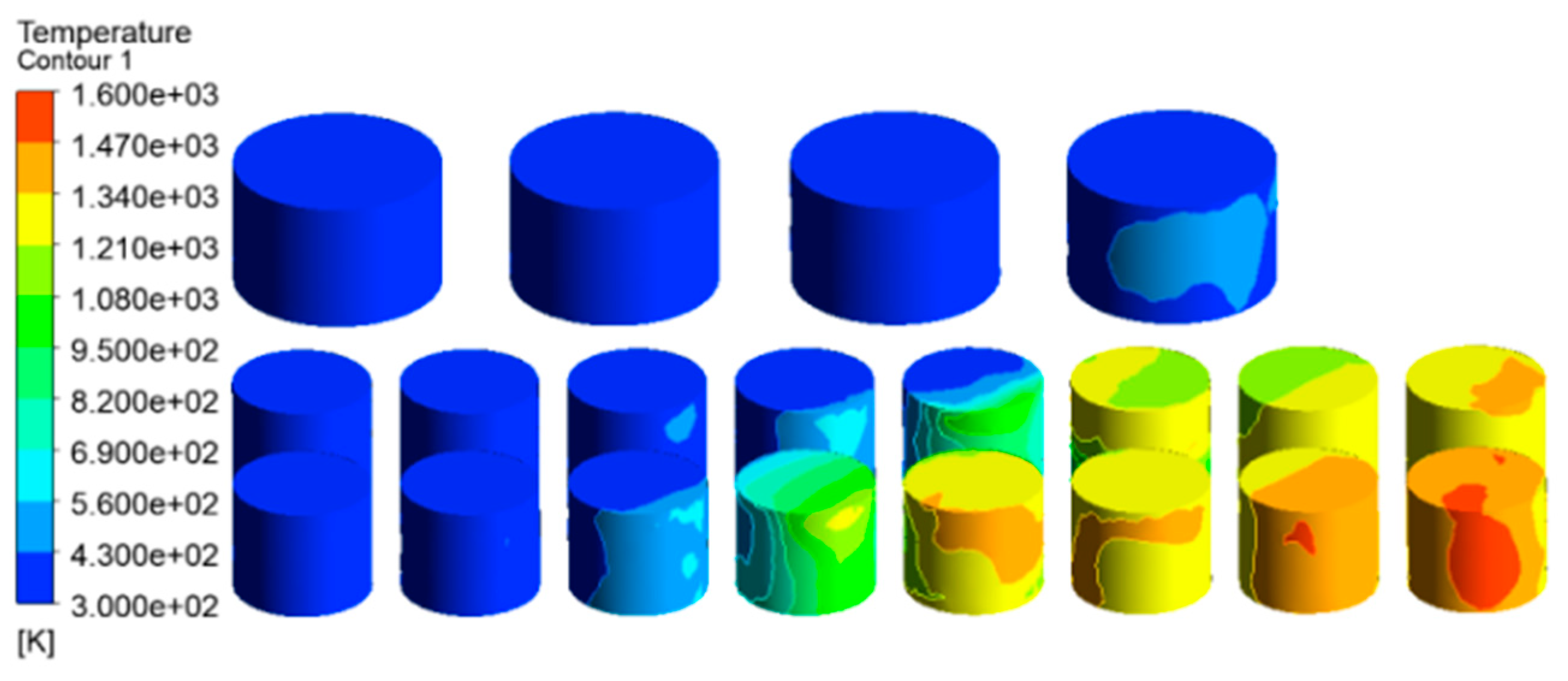
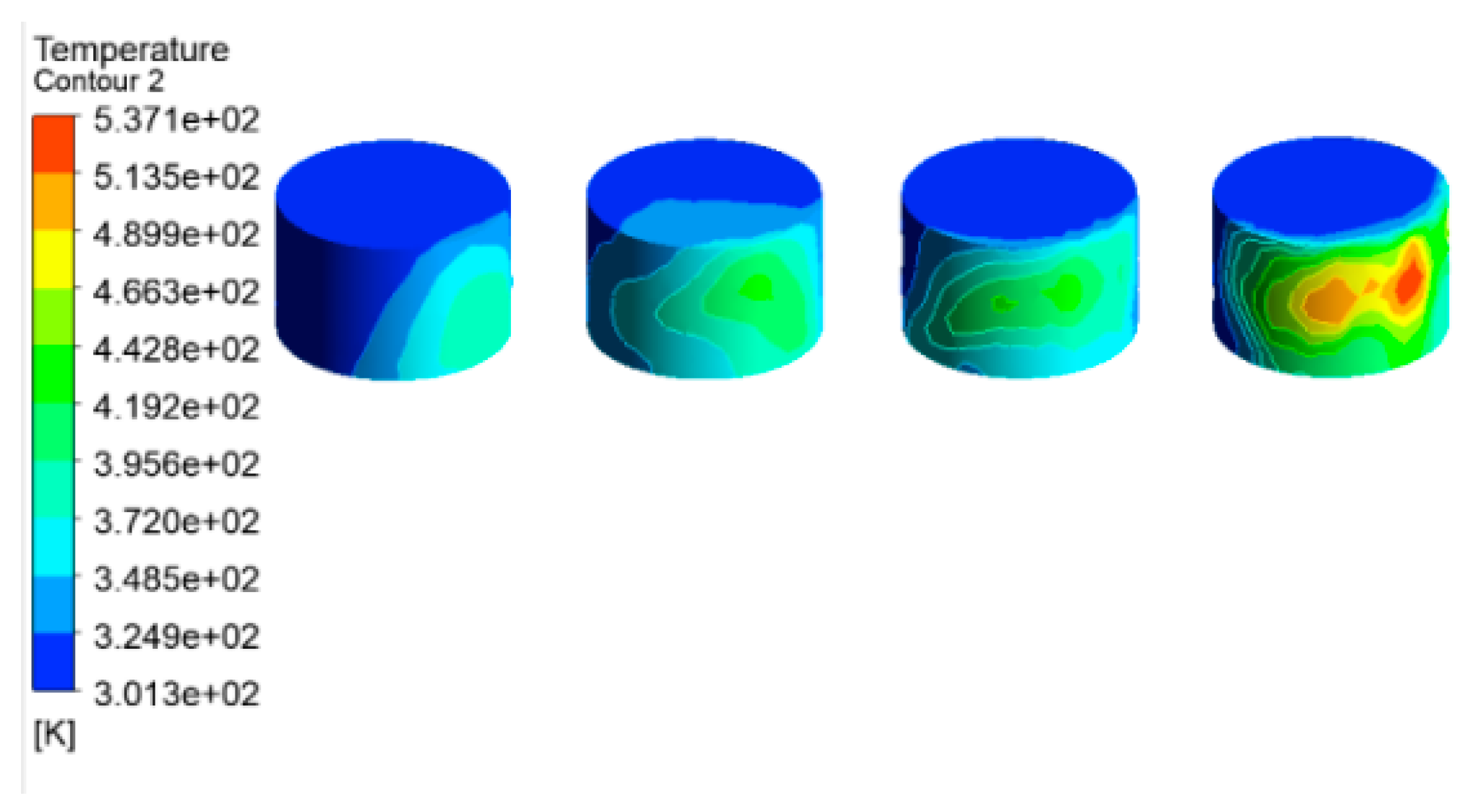
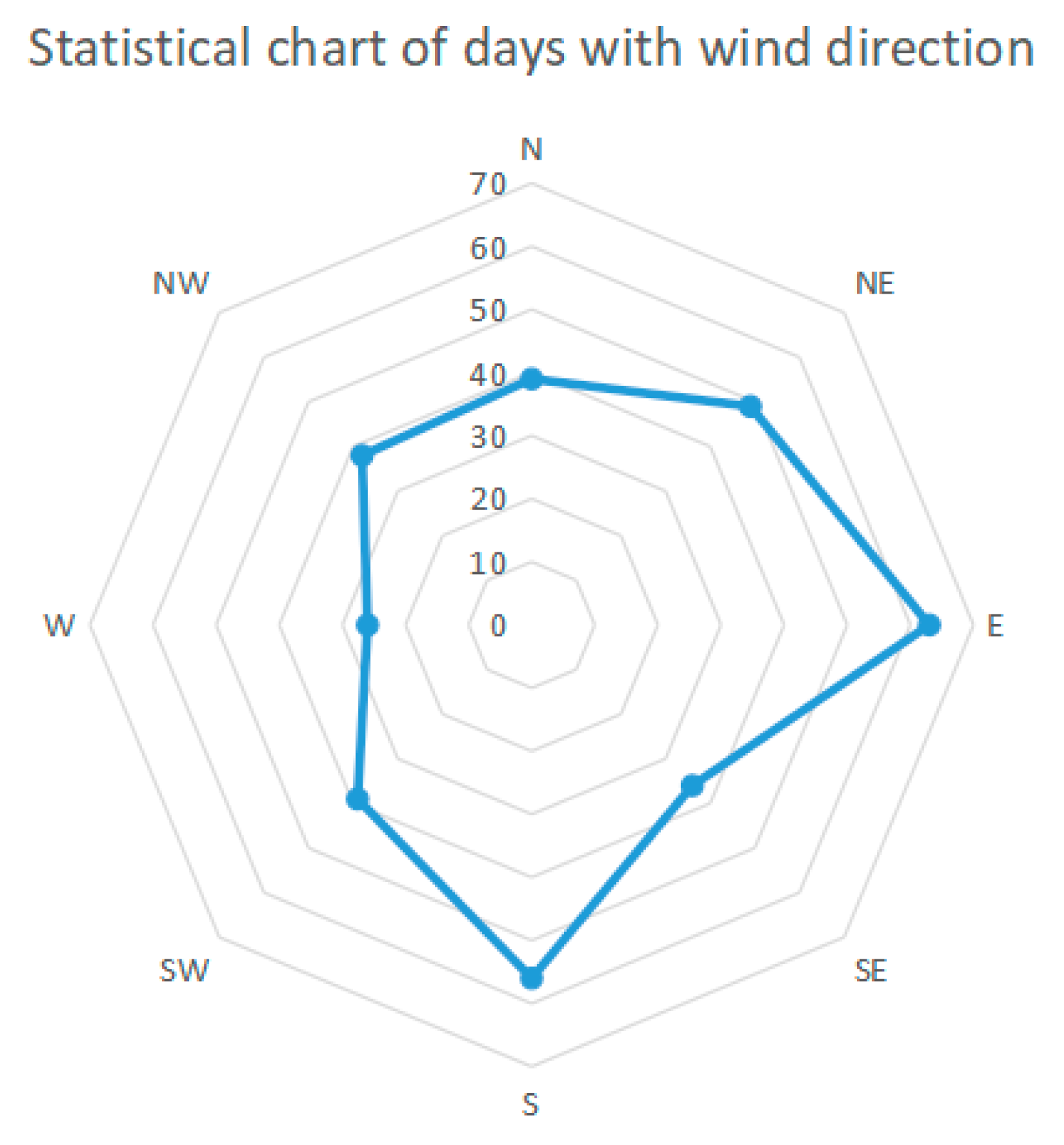
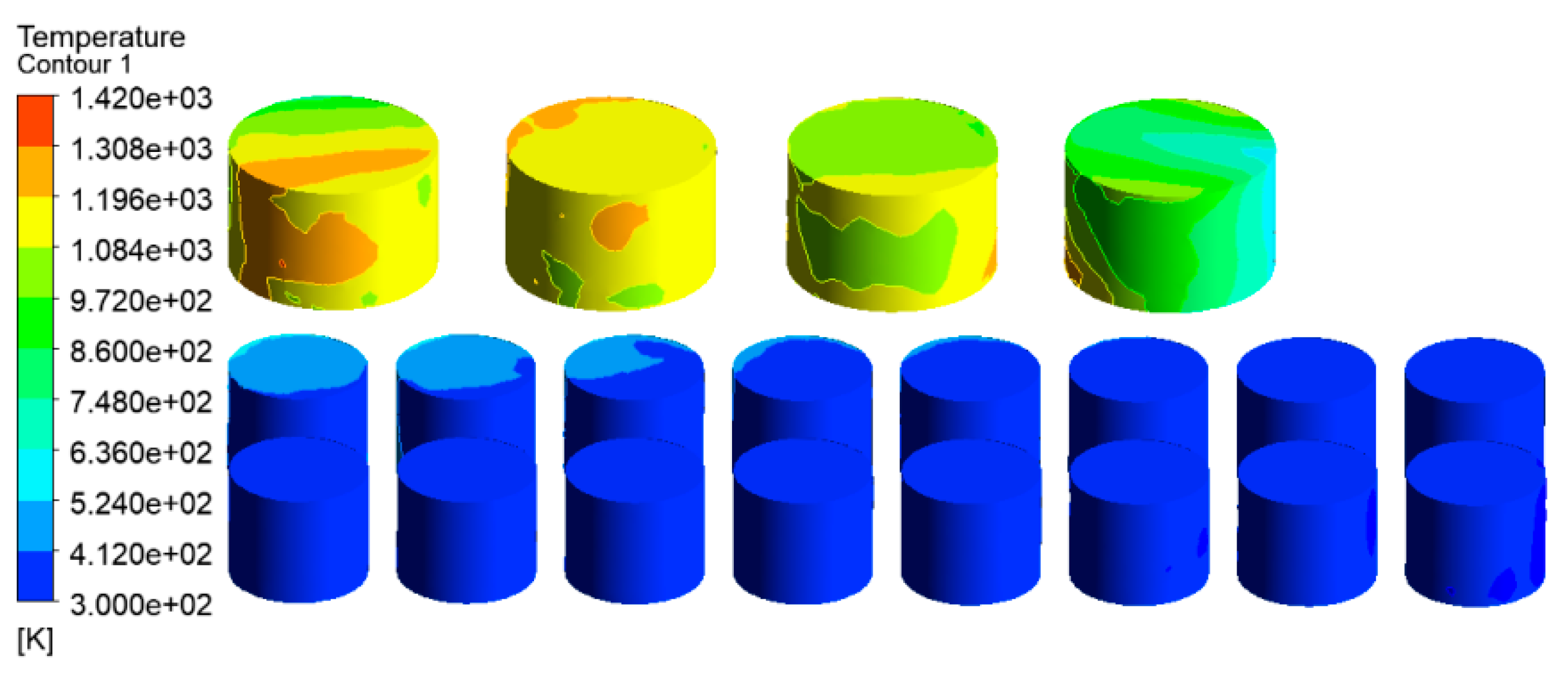
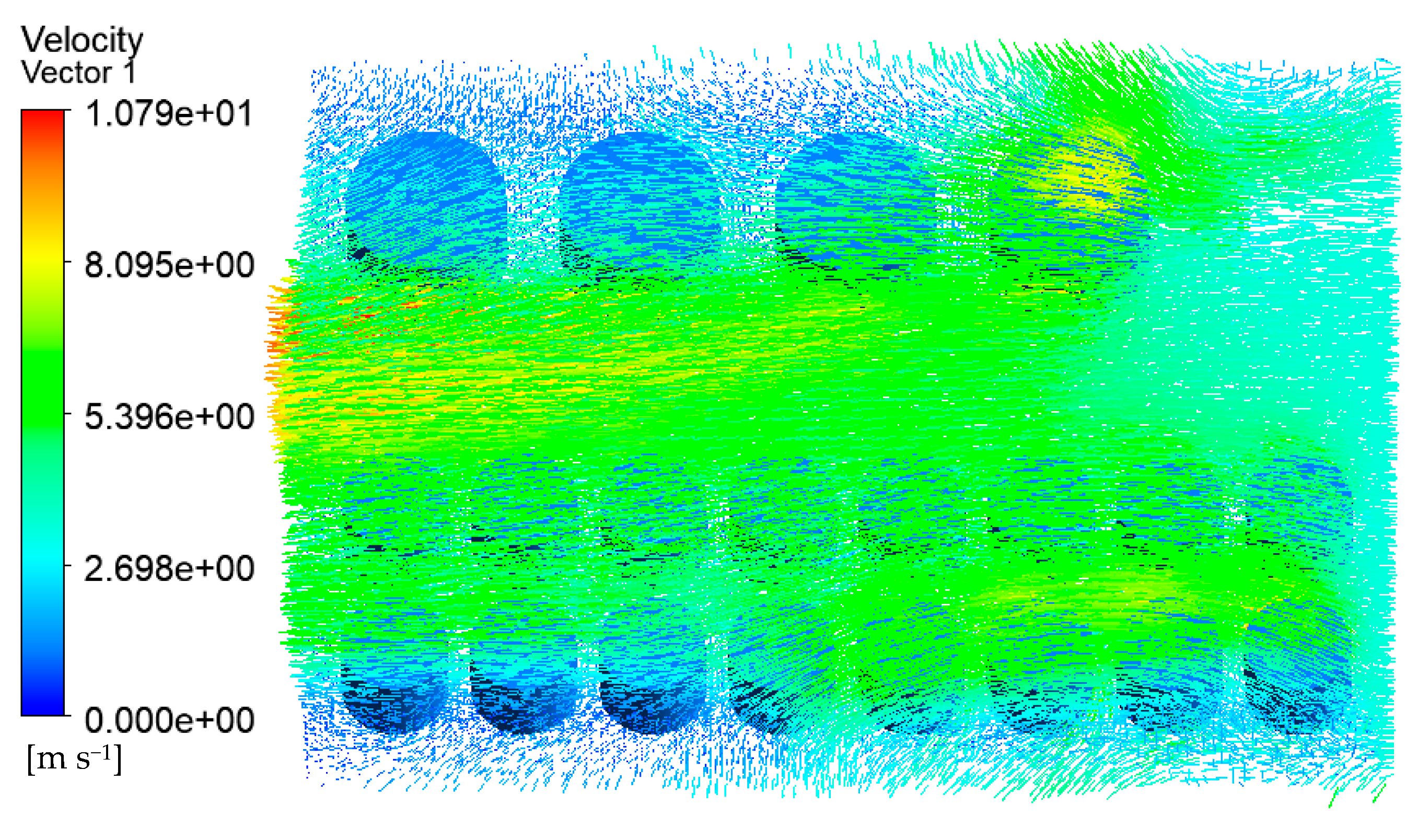
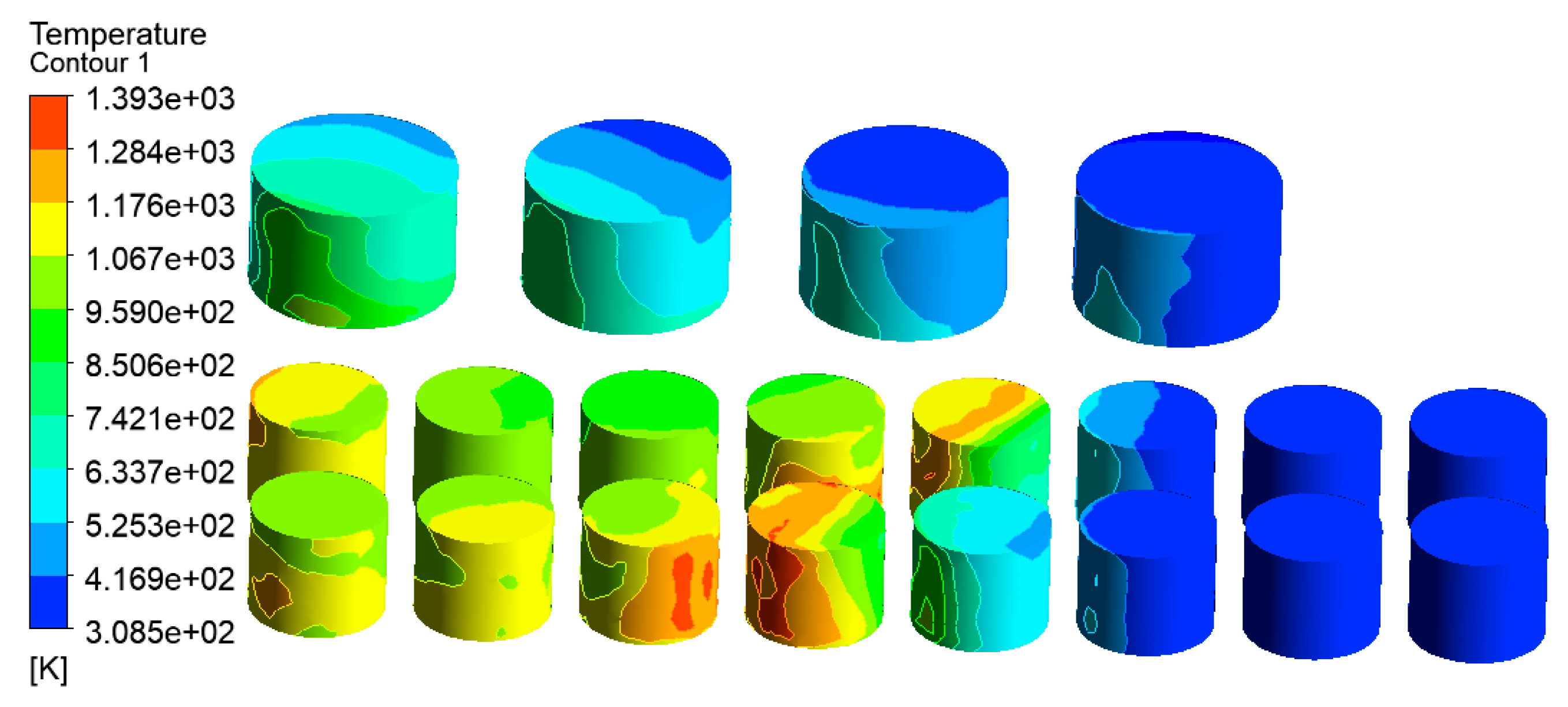

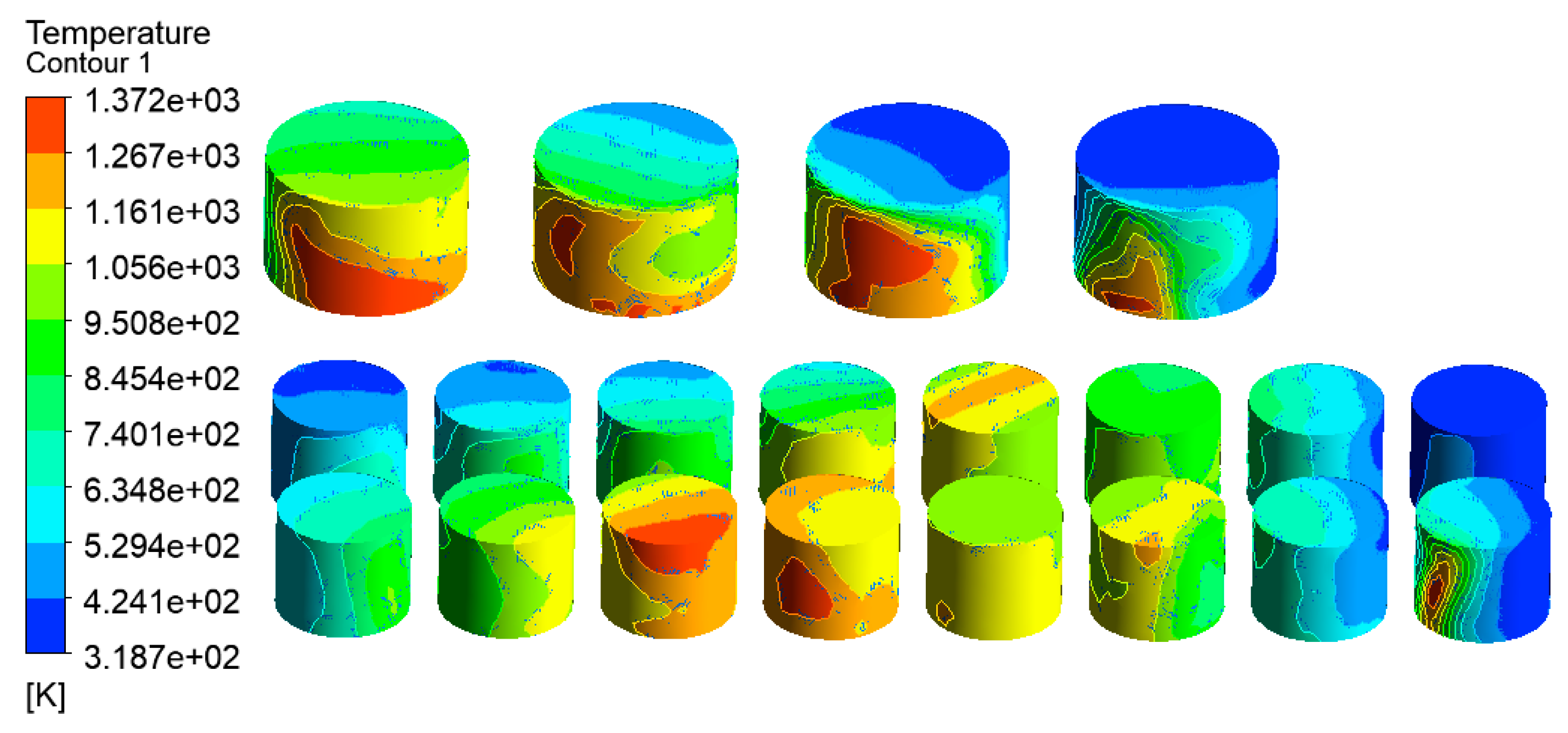


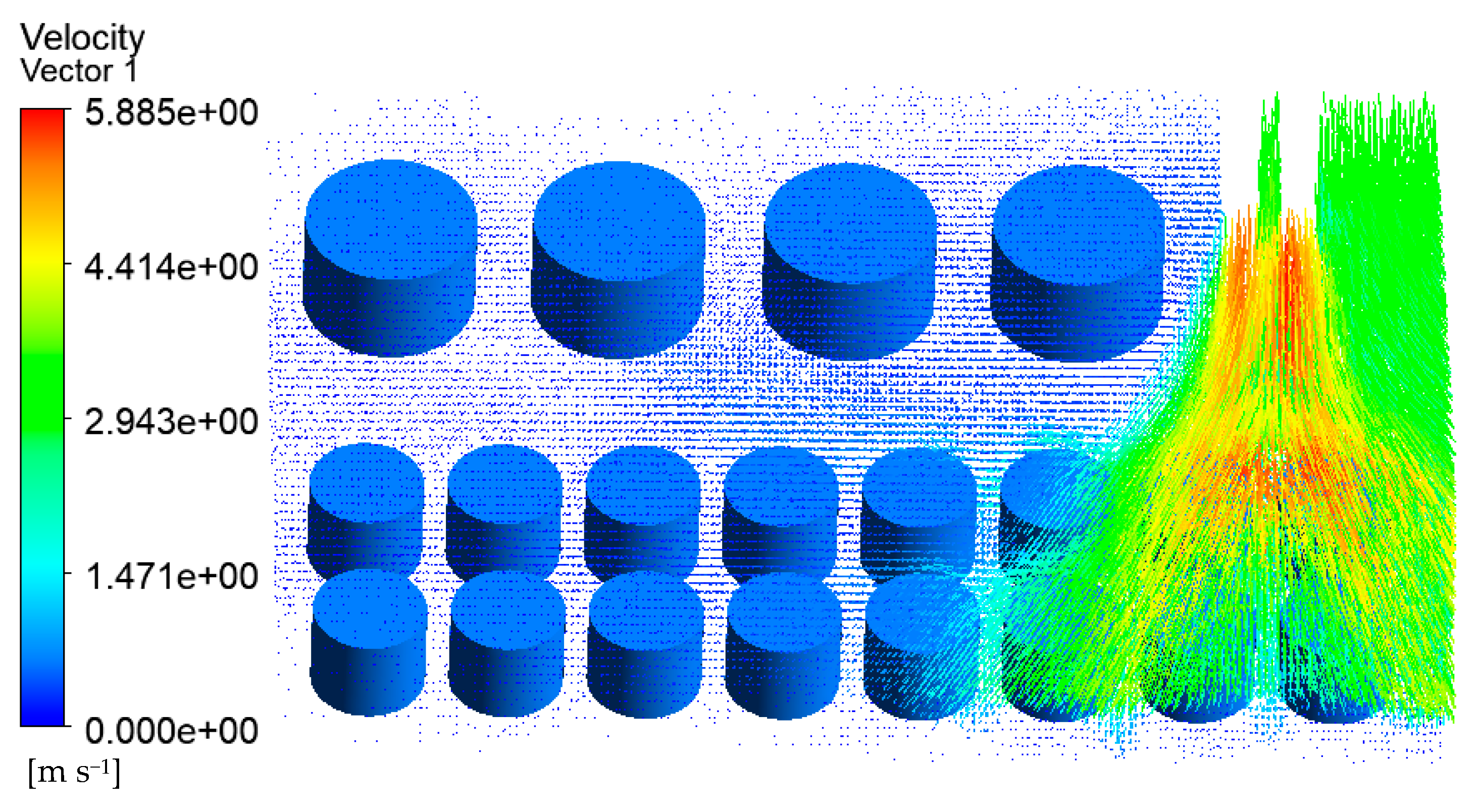


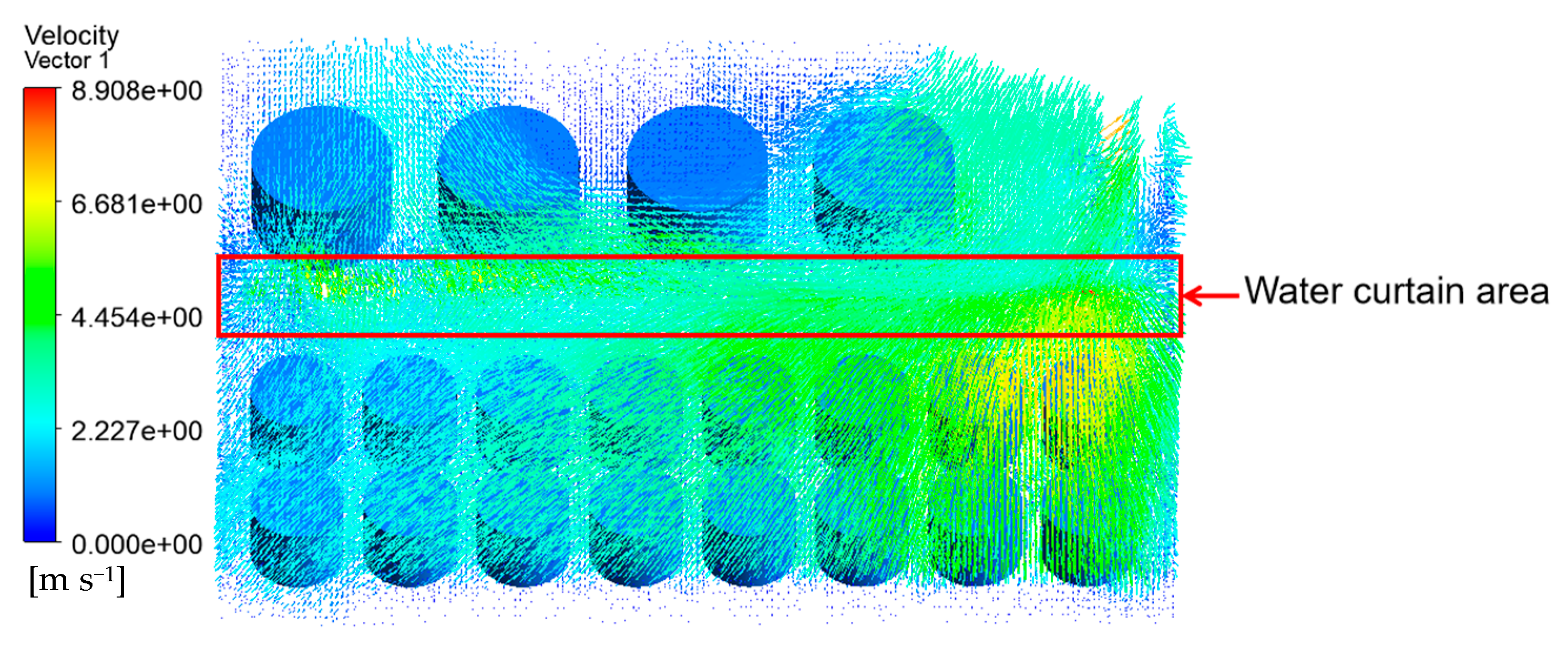
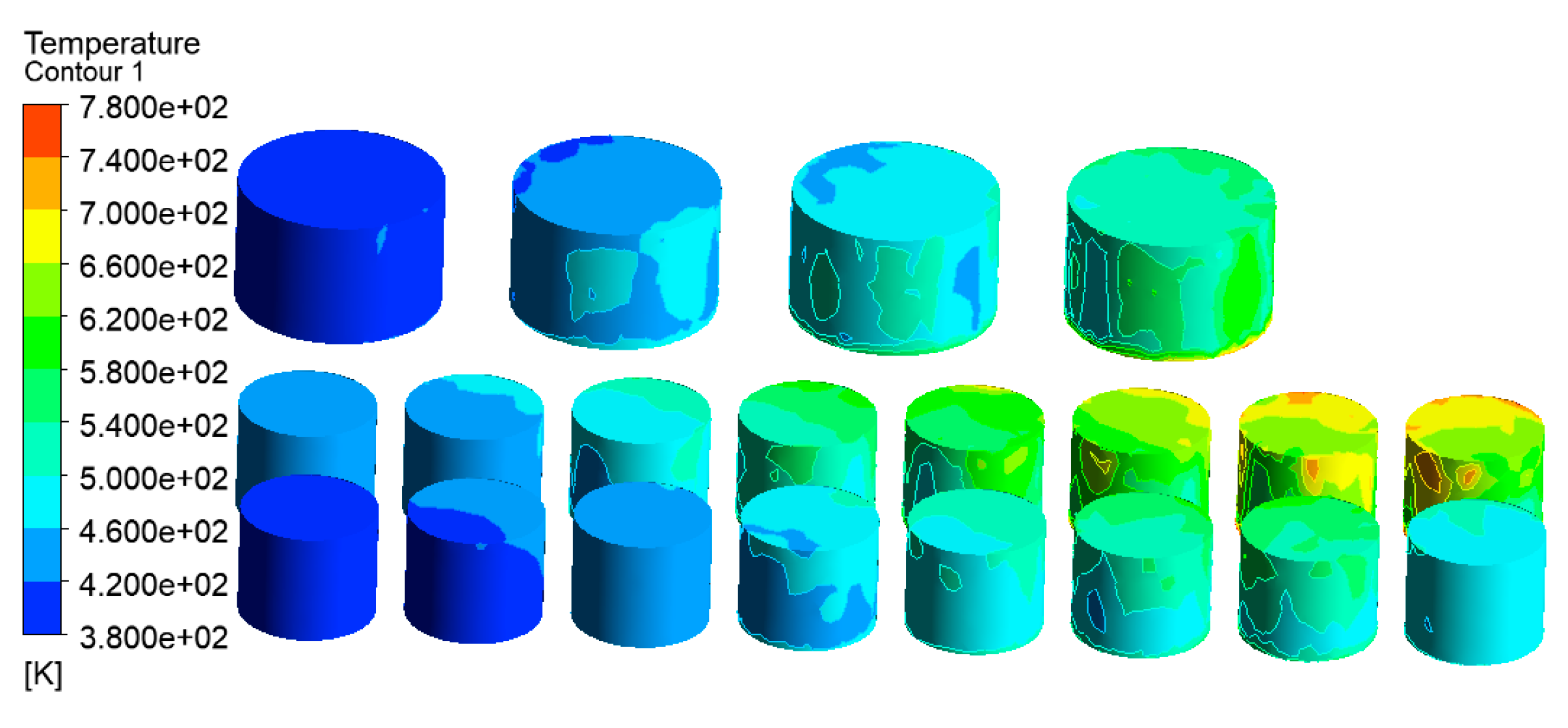


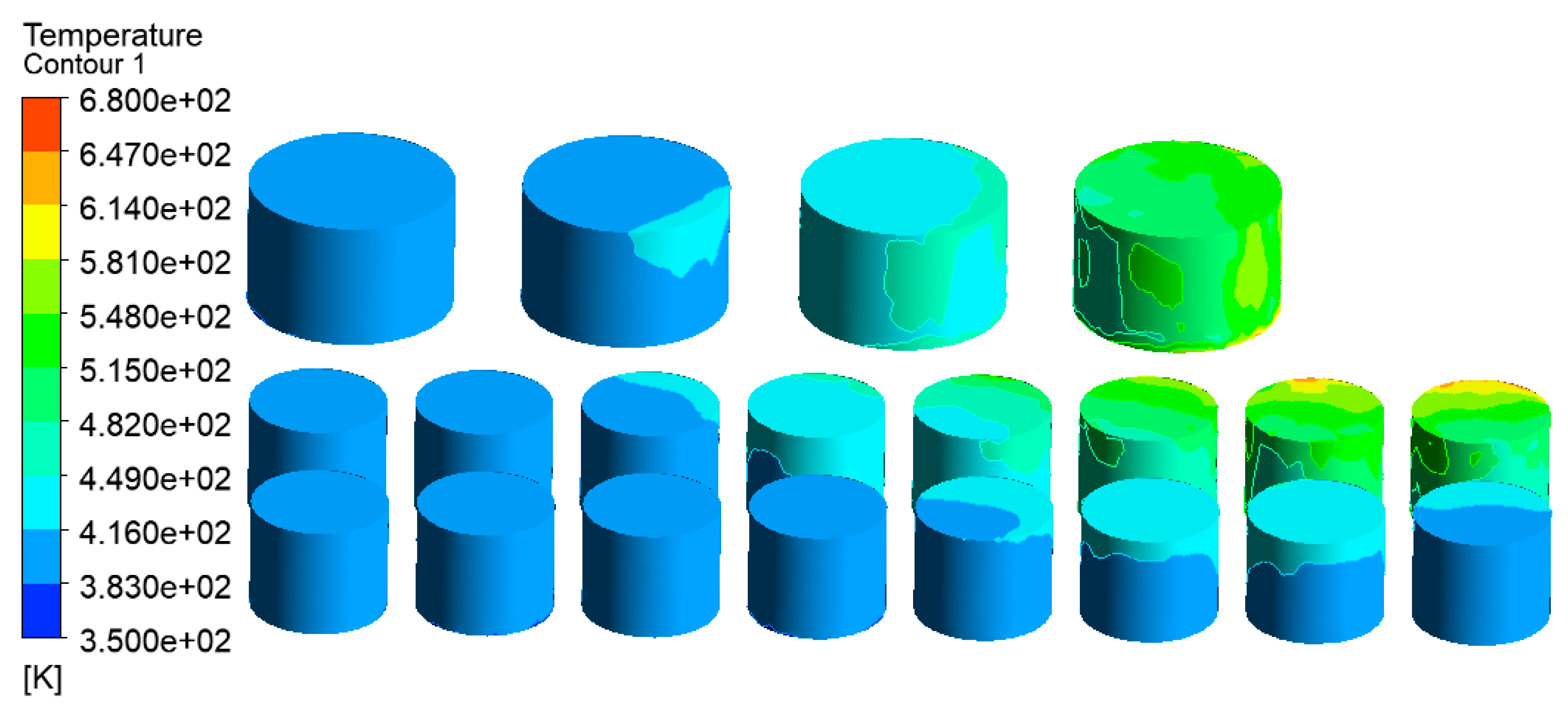
| Materials | PPMH/% | APP/% | Melamine/% | Lotus Root Starch/% | H2O/% |
|---|---|---|---|---|---|
| PPMHI-L | 31.92 | 0.43 | 0.11 | 0.26 | 67.26 |
Disclaimer/Publisher’s Note: The statements, opinions and data contained in all publications are solely those of the individual author(s) and contributor(s) and not of MDPI and/or the editor(s). MDPI and/or the editor(s) disclaim responsibility for any injury to people or property resulting from any ideas, methods, instructions or products referred to in the content. |
© 2023 by the authors. Licensee MDPI, Basel, Switzerland. This article is an open access article distributed under the terms and conditions of the Creative Commons Attribution (CC BY) license (https://creativecommons.org/licenses/by/4.0/).
Share and Cite
Bao, Y.; Zhang, F.; Cheng, J.; Wang, Y.; Guan, Y.; Ren, J.; Jin, F.; Cheng, Y.; Xie, W. Simulation on Heat Transfer and Emergency Protection of Tanks in a Tank Farm under Fire Scenario. Int. J. Environ. Res. Public Health 2023, 20, 5348. https://doi.org/10.3390/ijerph20075348
Bao Y, Zhang F, Cheng J, Wang Y, Guan Y, Ren J, Jin F, Cheng Y, Xie W. Simulation on Heat Transfer and Emergency Protection of Tanks in a Tank Farm under Fire Scenario. International Journal of Environmental Research and Public Health. 2023; 20(7):5348. https://doi.org/10.3390/ijerph20075348
Chicago/Turabian StyleBao, Yingwei, Feng Zhang, Jiaji Cheng, Yapeng Wang, Yu Guan, Junjie Ren, Fangbo Jin, Yunfei Cheng, and Weilun Xie. 2023. "Simulation on Heat Transfer and Emergency Protection of Tanks in a Tank Farm under Fire Scenario" International Journal of Environmental Research and Public Health 20, no. 7: 5348. https://doi.org/10.3390/ijerph20075348
APA StyleBao, Y., Zhang, F., Cheng, J., Wang, Y., Guan, Y., Ren, J., Jin, F., Cheng, Y., & Xie, W. (2023). Simulation on Heat Transfer and Emergency Protection of Tanks in a Tank Farm under Fire Scenario. International Journal of Environmental Research and Public Health, 20(7), 5348. https://doi.org/10.3390/ijerph20075348








